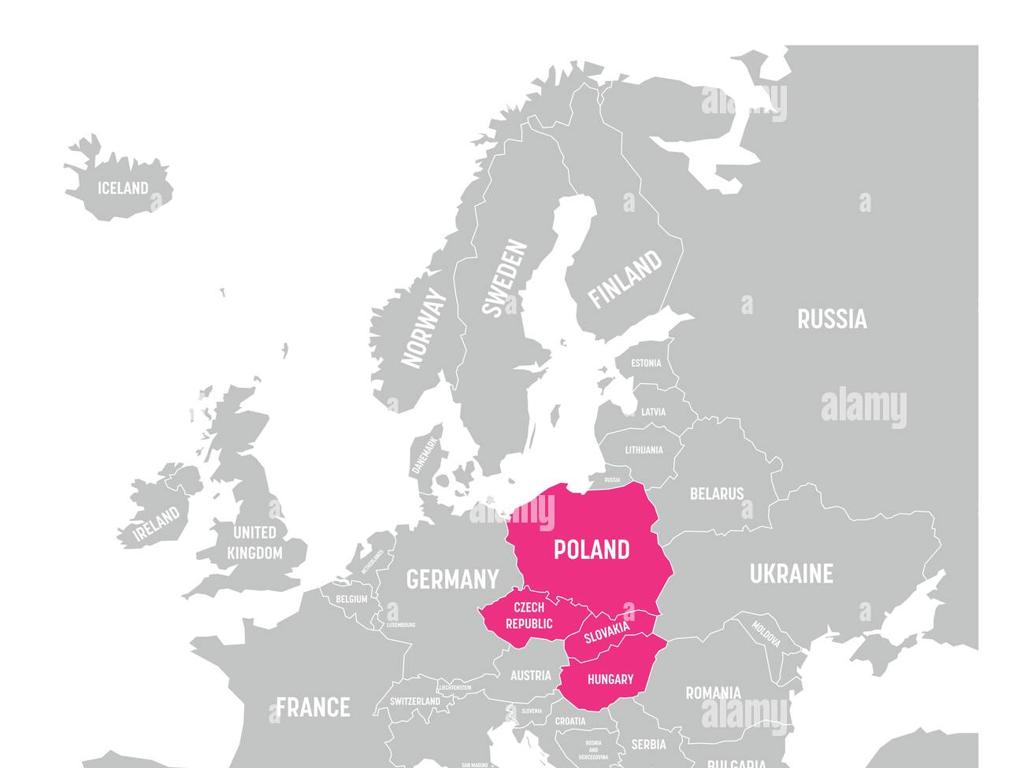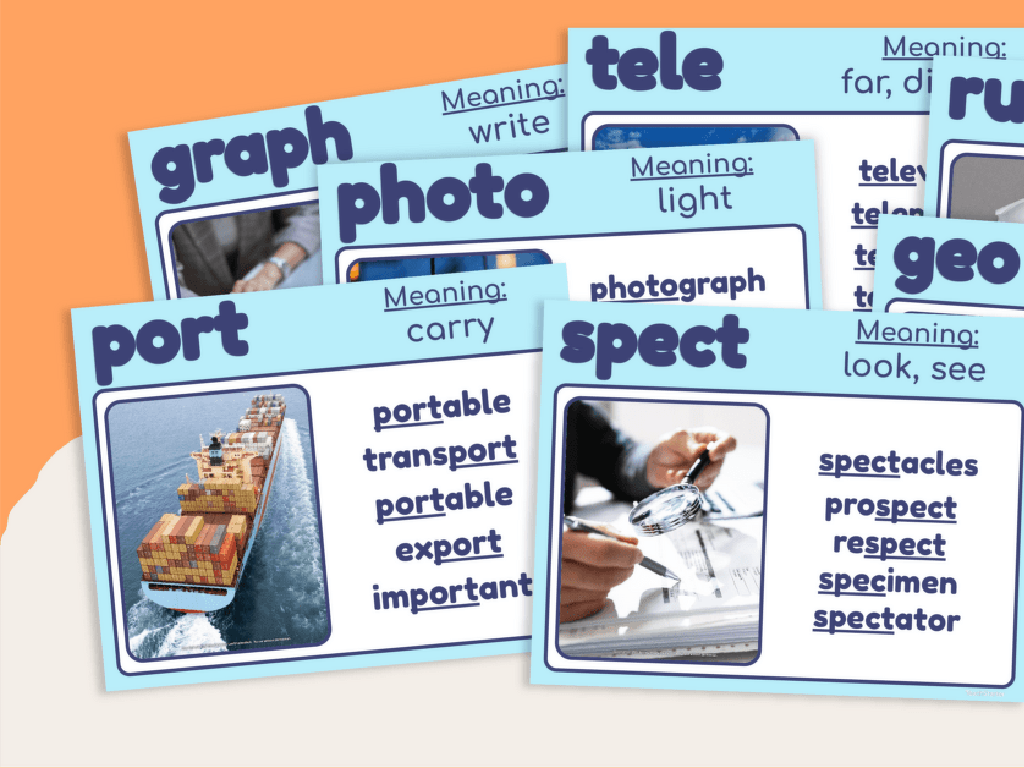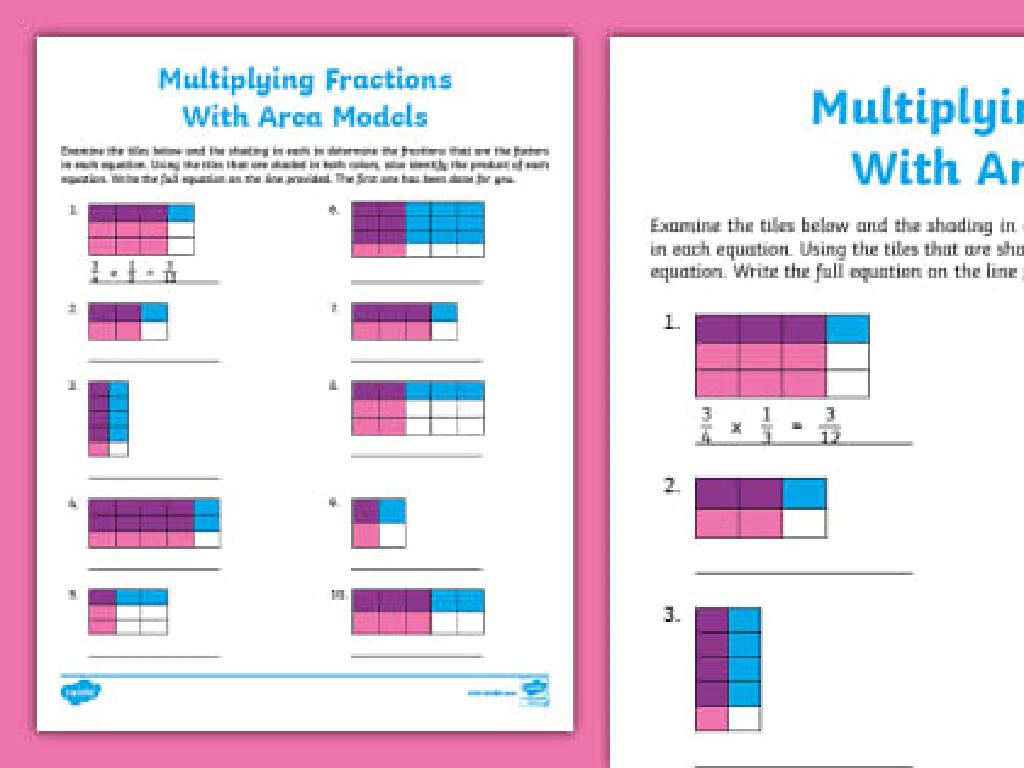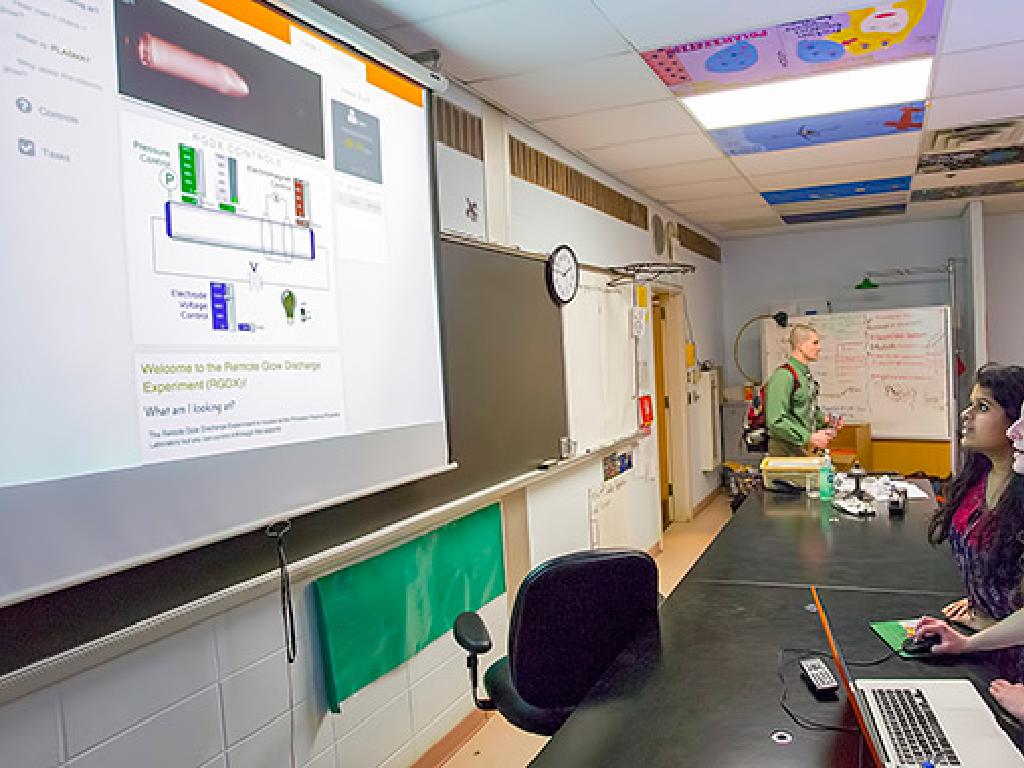Divide By 0.1 Or 0.01
Subject: Math
Grade: Fifth grade
Topic: Divide Decimals By Powers Of Ten
Please LOG IN to download the presentation. Access is available to registered users only.
View More Content
Dividing Decimals by Powers of Ten
– Understanding decimals
– Decimals represent parts of a whole
– Recap division with whole numbers
– Review how we divide numbers like 50 ÷ 5
– Dividing by 10, 100, and 1000
– Learn how dividing by 10, 100, or 1000 shifts the decimal point
– Practice with 0.1 and 0.01
– Use examples like 5 ÷ 0.1 and 3.5 ÷ 0.01 for practice
|
Begin with a brief review of what decimals are and how they are used to represent fractions and parts of a whole. Recap division with whole numbers to ensure students are comfortable with the basic division process. Introduce the concept of dividing by powers of ten, explaining how it’s similar to multiplying by powers of ten but in reverse, resulting in the decimal point moving to the right. Provide clear examples to demonstrate this concept, such as showing how dividing by 0.1 is the same as multiplying by 10. Encourage students to practice with examples and to understand the pattern of moving the decimal point when dividing by 0.1 and 0.01.
Understanding Powers of Ten
– Define powers of ten
– Powers of ten: 10^1=10, 10^2=100, 10^3=1000
– Examples: 10, 100, 1000
– 10 (ten), 100 (hundred), 1000 (thousand)
– Multiplying shifts decimal right
– 3.5 x 10 = 35; the decimal moved one place to the right
– Dividing shifts decimal left
– 35 ÷ 10 = 3.5; the decimal moved one place to the left
|
This slide introduces the concept of powers of ten, which is fundamental in understanding how to divide decimals by powers of ten. Start by defining powers of ten and providing clear examples such as 10, 100, and 1000. Explain that multiplying a number by a power of ten moves the decimal point to the right, making the number larger. Conversely, dividing by a power of ten moves the decimal point to the left, making the number smaller. Use visual aids or manipulatives to demonstrate the shift of the decimal point. Encourage students to practice with different numbers to solidify their understanding.
Dividing by 0.1
– 0.1 as a power of ten
– 0.1 is 10^-1, a tenth of 1
– Dividing shifts decimal left
– Like multiplying by 10, move decimal one place right
– Example: 5 ÷ 0.1
– 5 ÷ 0.1 equals 50
|
When we divide by 0.1, we’re essentially multiplying by 10, which is the reciprocal of 0.1. This is because 0.1 is the same as 10^-1, or one-tenth. To help students visualize, explain that dividing by 0.1 shifts the decimal point one place to the right, making the number larger. Use the example of dividing 5 by 0.1 to show that the answer is 50. This is a fundamental concept that will help students understand how division by decimals works, especially when dealing with powers of ten. Practice with more examples to ensure understanding.
Dividing by 0.01
– Understand 0.01 as 1/100
– 0.01 is the same as 1/100, a power of ten.
– Dividing shifts decimal right
– When you divide by 0.01, move the decimal two places to the right.
– Example: 3.5 ÷ 0.01
– 3.5 ÷ 0.01 equals 350. Why? Because we moved the decimal two places to the right.
– Practice with different numbers
|
This slide introduces students to the concept of dividing by 0.01, emphasizing that 0.01 is a power of ten (1/100). It’s crucial to illustrate that dividing by 0.01 is the same as multiplying by 100, which is why the decimal point moves two places to the right. Use the example of dividing 3.5 by 0.01 to show this shift visually and numerically. Encourage students to practice with different numbers to solidify their understanding. Provide additional examples and have students explain the process to ensure comprehension. This concept is foundational for working with decimals and understanding the relationship between division and multiplication when it comes to powers of ten.
Dividing by 0.1 and 0.01: Class Practice
– Practice dividing by 0.1
– Example: 5 ÷ 0.1 = ? Think of how many times 0.1 fits into 5.
– Now divide numbers by 0.01
– Example: 3 ÷ 0.01 = ? Imagine breaking 3 into 100 parts.
– Work through examples as a class
– We’ll solve problems together and discuss the steps.
– Understand shifting decimal places
– Learn how dividing by 0.1 or 0.01 moves the decimal point to the right.
|
This slide is aimed at providing students with practice problems to solidify their understanding of dividing by 0.1 and 0.01. Start with simpler problems involving 0.1 to build confidence, then progress to 0.01, which may be more challenging. Encourage students to think about the relationship between the divisor and the number of decimal places the decimal point moves. As a class, work through examples step by step, ensuring that each student follows and participates in the process. Emphasize the concept of shifting decimal places to the right when dividing by decimals that are powers of ten. Provide additional examples if needed and encourage students to ask questions throughout the activity.
Class Activity – ‘Decimal Dive’
– Pair up for division problems
– Divide using 0.1 and 0.01
– When dividing by 0.1 or 0.01, move the decimal point in the number to the right
– Use tools to visualize division
– Base-ten blocks or place value charts can help you see the shifts in place value
– Share your methods with the class
|
This activity is designed to help students understand the concept of dividing by decimals, specifically by 0.1 and 0.01. By pairing up, students can collaborate and discuss their problem-solving strategies, which reinforces their learning. Using base-ten blocks or place value charts will provide a visual aid to comprehend how the place value increases when dividing by a decimal. After solving the problems, students will engage with the class by sharing their methods, promoting communication skills and allowing them to learn from each other. For the teacher: Prepare a set of division problems involving 0.1 and 0.01. Ensure there are enough base-ten blocks or place value charts for each pair. Walk around to assist pairs as needed. Plan for a sharing session where each pair can explain their process and answer any questions from their classmates.
Conclusion: Dividing by 0.1 and 0.01
– Summarize division by 0.1 and 0.01
– Dividing by 0.1 or 0.01 shifts the decimal point to the right
– Importance of this division concept
– Helps in understanding place value and decimals
– Open floor for questions
– Review with examples
– Let’s solve 5 ÷ 0.1 and 3.5 ÷ 0.01 together
|
As we wrap up, let’s recall that dividing by 0.1 or 0.01 involves moving the decimal point one or two places to the right, respectively. This concept is crucial as it lays the foundation for understanding place value and operations with decimals, which are used in everyday calculations such as money transactions and measurements. Now, let’s address any questions to clear up uncertainties. To ensure comprehension, we’ll review a couple of examples together. For instance, dividing 5 by 0.1 gives us 50, and dividing 3.5 by 0.01 results in 350. Encourage students to practice more problems at home to reinforce their learning.
Homework: Dividing Decimals by 0.1 and 0.01
– Complete the decimal division worksheet
– Study for the upcoming quiz
– Practice with real-world examples
– For example, divide a dollar into dimes (0.1) or pennies (0.01)
– Bring any questions to class
– Understanding is key, so ask if you’re unsure!
|
This homework assignment is designed to reinforce the concepts taught in class about dividing decimals by powers of ten. The worksheet will provide structured practice, while the quiz will assess their understanding of the topic. Encourage students to find practical applications of these division skills in everyday life, such as dividing money into smaller units. Remind them that practice is essential for mastery and that they should not hesitate to bring up any questions or difficulties they encounter during the next class. Provide several example problems and solutions to guide their home practice and preparation for the quiz.





